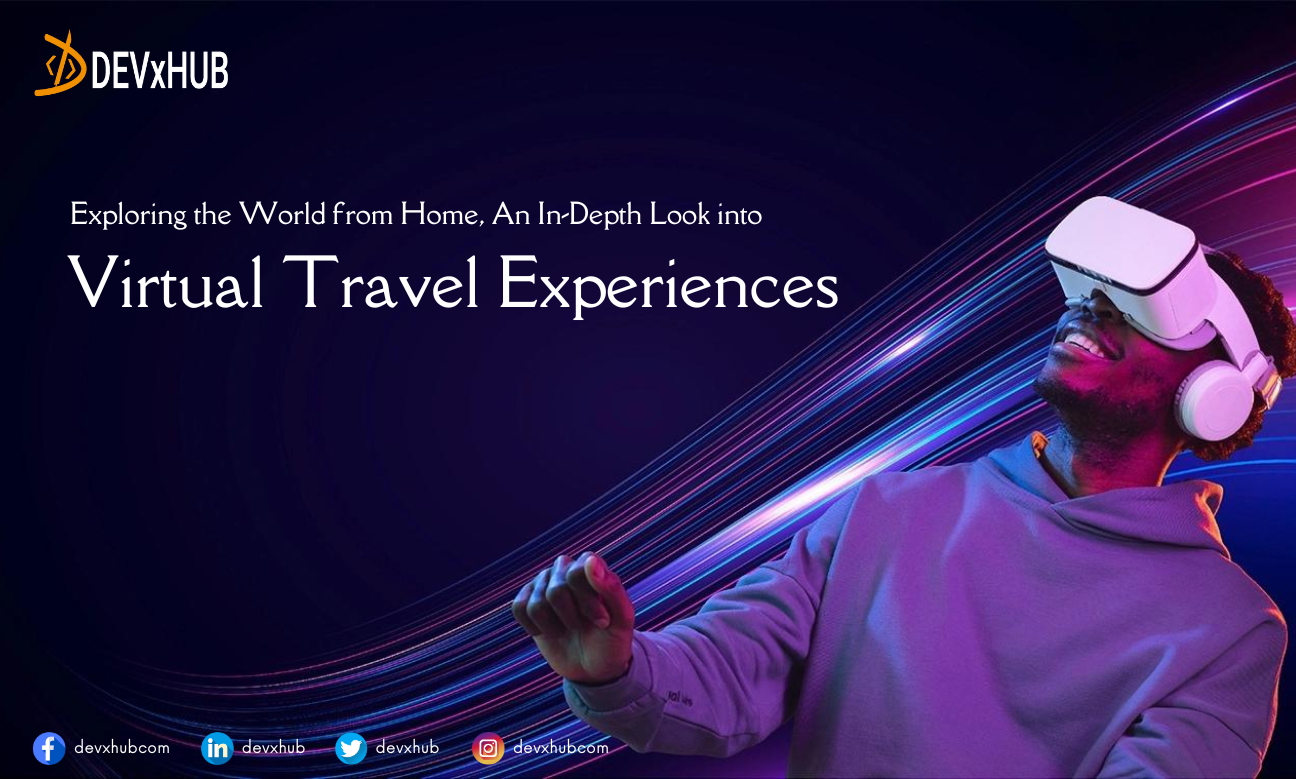Blog - Virtual Travel Experiences | Exploring the World from Home
Around the globe, countless city dwellers dream of adventure and exploration. Yet, the pandemic-induced isolation has placed an encapsulating barrier around each of us. But worry not! With the advances in digital technology, we can evade these barriers and charter our dreams – even from the comfort of our living rooms. Welcome to the world of virtual travel experiences.
The Thrill of Virtual Reality (VR)
The pinnacle of digital exploration lies in Virtual Reality. With VR headsets like Oculus Rift, HTC Vive, or PlayStation VR, you can dive deep into the sea, climb the Everest or walk through tranquil gardens in Japan. Companies like Expeditions Pioneer offer virtual trips through time. With their VR tours, you can explore historical sites and events, giving you insights into different eras and cultures.
Enhancing Your Virtual Travel Experiences
To get the most out of virtual travel, consider the following tips:
- Invest in Technology: A device with a large, high-resolution screen or a VR headset can significantly enhance your virtual travel experiences.
- Research: Spend time finding high-quality virtual tours or live feeds. Look for interactive and immersive experiences.
- Participate: Engage with interactive experiences whenever possible. Many virtual tours include interactive elements like quizzes, games, or tasks that can make the experience more engaging and rewarding.
- Plan: Treat your virtual travel experience like a real trip. Research the destination, create an itinerary, and even consider preparing a local dish to enjoy while you explore.
Museum Tours from Your Living Room
For those who appreciate history and culture, many prestigious museums around the globe offer virtual tours. Paris’s Louvre, New York’s Metropolitan Museum of Art, London’s British Museum, and Amsterdam’s Van Gogh Museum to name a few. Glide through the quiet corridors, marvel at the artworks, learn more about the artists, periods, and techniques – all while sipping a cup of coffee on your couch.
Experience Documentary-Style Travel on Netflix and YouTube
Platforms like Netflix and YouTube offer an array of documentaries and series taking you around the world, capturing the essence of various countries and cultures. Shows like Netflix’s “Street Food” introduce you to mouthwatering delicacies around the world, while ‘Planet Earth’ documents the marvels of the natural world. Furthermore, travel vloggers on YouTube like Mark Wiens and Drew Binsky offer an authentic look into their travels, letting you experience the world through their eyes.
The Wonders of Google Earth
Google Earth, a remarkable tool, lets you zoom into streets in Lagos or view your house from space. With their Voyager feature, engage in interactive stories from around the world. For instance, you can trace the journey of Lewis and Clark, or follow the migration of Monarch butterflies. An enriching and educating experience, it’s like having a social studies textbook right in your hands, much more interactive and fun-filled.
Explore Outer Space
Thanks to organizations like NASA, the final frontier is evident in our living rooms. Experience what it’s like to be on the International Space Station, or explore the surfaces of Mars with the Mars Rover. NASA’s extensive library of images and videos, as well as their interactive apps and websites, opens up a universe of exploration.
Language Learning – The Gateway to Cultures
Learning a new language doesn’t just add a skill to your repertoire; it’s a doorway to understanding a new culture. Apps like Duolingo, Babbel, or Rosetta Stone make language learning engaging and fun. Delve deeper into a country’s culture by understanding their language, idioms, and expressions.
Virtual Volunteering
To add a sense of purpose to your digital travels, consider virtual volunteering. Websites like UN Volunteers and Translators without Borders offer opportunities to contribute your skills from the comfort of home, aiding organizations worldwide.
Frequently Asked Questions about Virtual Travel
Q: Can virtual travel replace real travel experiences? A: While virtual travel offers a unique way to explore and learn about new places, it cannot completely replace the full sensory experience of physical travel. It is, however, a great supplement or alternative.
Q: Is virtual travel free, or does it come at a cost? A: Many virtual travel experiences are freely available online, especially virtual tours provided by museums, galleries, and tourism boards. However, more advanced or premium content, such as certain VR experiences or high-quality travel documentaries, may come at a cost.
Q: How can educators use virtual travel in their teaching? A: Virtual travel can be a great educational tool. Teachers can use virtual tours, live webcams, and VR experiences to enhance lessons, bring concepts to life, and provide students with a broader global perspective.
In conclusion, while we continue to fight the pandemic, our dreams to travel and explore needn’t be curtailed. Until we can safely roam the world again, immersive technology offers near-real experiences allowing us to satiate our wanderlust and travel the world, all from within the safety of our homes. From virtual reality to online cooking, the world is teeming with opportunities for exploration. Happy virtual traveling!
Related Posts
Categories
- App Development (2)
- Design (2)
- DEVxHUB (30)
- Digital Marketing (2)
- Guide (24)
- It Bangladesh (1)
- Logo design (1)
- Operating system (1)
- Personal Improvement (14)
- Planning (4)
- Project management (3)
- Social media (2)
- Software Development (5)
- Software Quality Assurance (8)
- Startups (1)
- Team work (1)
- UI UX (1)
- Web Development (6)
Main Tags
- 2024
- Android
- app development
- bangladesh
- content writing
- design
- devxhub
- Digital marketing
- Guide
- IOS
- It
- logo design
- Operating system
- Personal Improvement
- planning
- project management
- social media
- Software Development
- Software Quality Assurance
- software testing
- software testing types
- Startups
- Success
- team
- UI UX
- UI UX design
- VR
- Web Development















